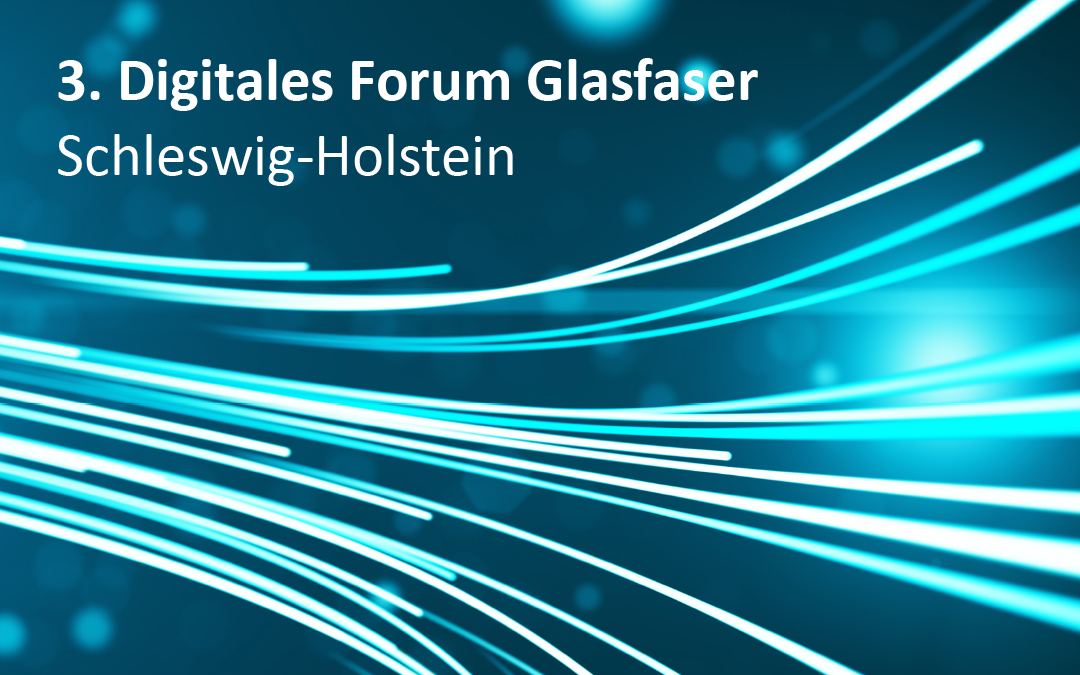Can broadband associations benefit from cooperation in the expansion of fiber optic networks – and if so, how? This was a central question at the 3rd Digital Forum Glasfaser Schleswig-Holstein.
The third edition of the Digital Fiber Optic Forum Schleswig-Holstein took place on 8 April 2021 under the motto “The broadband associations” and dealt with the situation of the fiber optic expansion municipally supported players in the northernmost federal state of Germany. Dr. Bernd Buchholz (Minister of Economic Affairs, Transport, Labour, Technology and Tourism of Schleswig-Holstein), Angelika Poggensee (BZV consultant), Sönke Körber (Breitbandzweckverband Probstei), Andreas Betz (Breitbandzweckverband Hüttener Berge) and Ines Nicolaisen (Zweckverband Breitband Marsch&Geest) discussed under the direction of Dr. Klaus Winkler (Sumbiosis). Klaus Winkler (Sumbiosis), they engaged in a lively and sometimes controversial discussion on current issues in the telecommunications market, with a particular focus on the current expansion situation with fiber optic networks in Schleswig-Holstein and the role of the broadband associations in this context.
The online event was characterized by an intensive discussion atmosphere, which was interactively loosened up by the audience with questions via a chat, so that a lively dialogue developed between the panel participants and the approximately 130 listeners in the auditorium despite the physical distance. With a focus on the possibilities of future expansion in the area, as well as the integrated network expansion in already partially developed areas, the discussions continued to revolve primarily around questions about possible cooperation models between the broadband associations, as well as the special characteristics of the successful “special-purpose association” model in the context of the development of white spots in broadband coverage.
According to the federal broadband atlas, over 31%, i.e. almost a third of all households in Schleswig-Holstein, already have access to a purely fiber-optic broadband connection. Around three quarters of all households in the state also have gigabit-capable access. While this figure was 74% in mid-2020, it had risen to 78.5% by the end of 2020. All participants at the event agreed that this leading position is due in particular to the great commitment of the broadband associations and local players in the municipalities. An important piece of the mosaic for this consistent and targeted expansion in the underserved areas of Schleswig-Holstein is not only precise knowledge of regions that are already connected, but also knowledge of usable infrastructures that can be integrated synergistically into the expansion projects. With its broadband information system, the Broadband Competence Center Schleswig-Holstein (BKZ.SH) provides a powerful tool for planning purposes for the broadband initiatives so that they can drive forward the expansion in the white spots in a targeted manner.
Since mid-2020, a new interactive map portal has also been available at www.meernetz.sh in order to transparently document to citizens how broadband expansion is developing in the northernmost federal state and which connection options to the fast broadband network are available locally. The aim of the website is to clearly visualize the status of fiber optic expansion in Schleswig-Holstein and at the same time offer users a neutral and complete overview of all digital infrastructures and telecommunications companies in Schleswig-Holstein. As local and regional providers are also included in the presentation, this is a particular advantage for the broadband associations, which for the first time are presented in the interactive map on an equal footing with the large providers and their expansions. The creation of transparent and equal competition between regional and national providers was strongly supported by all panel participants.

